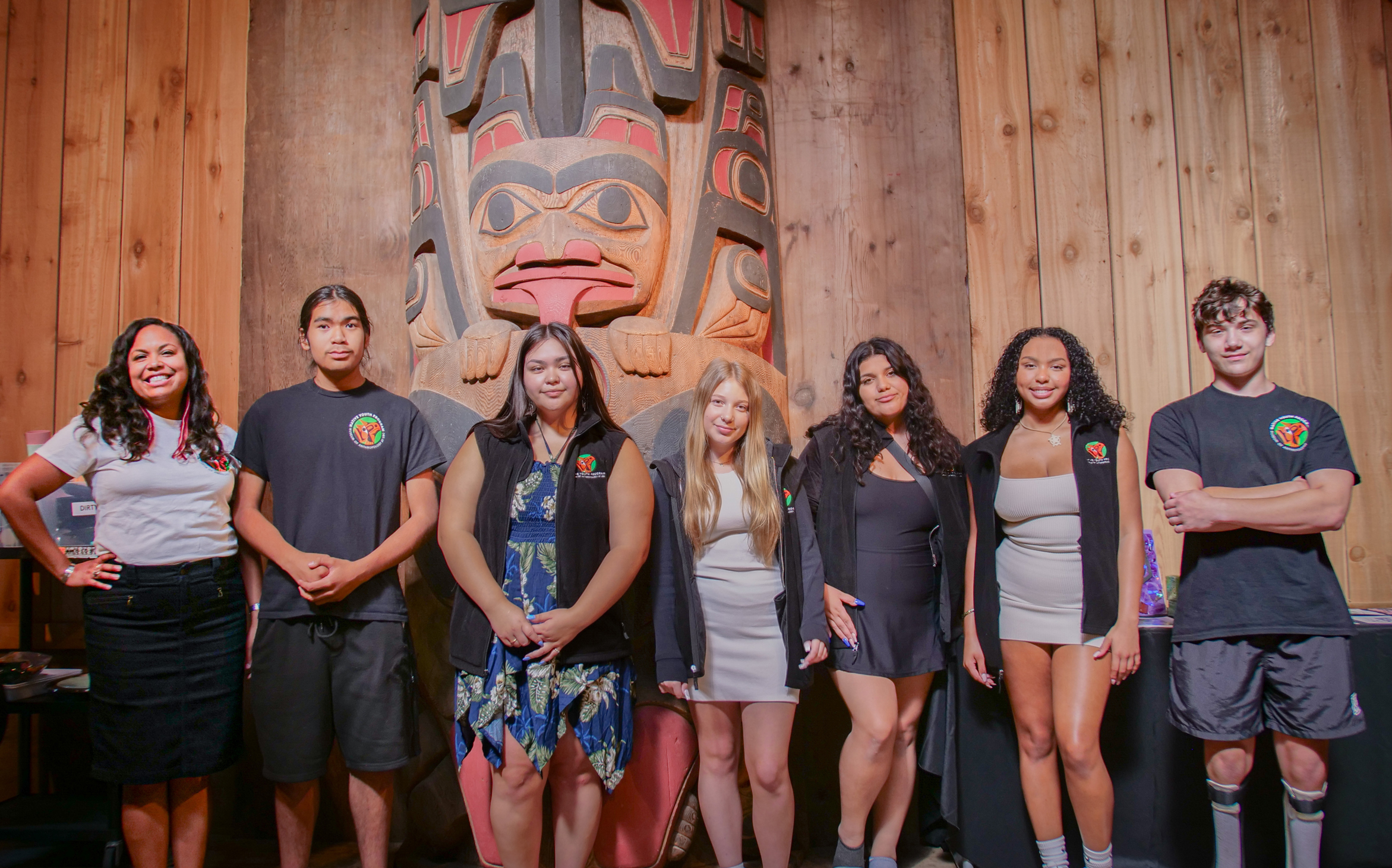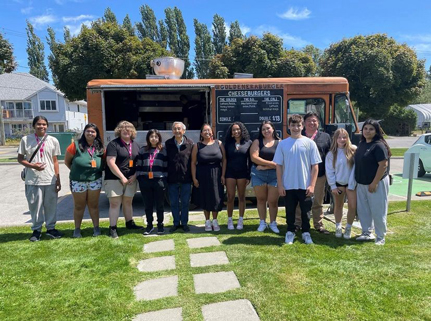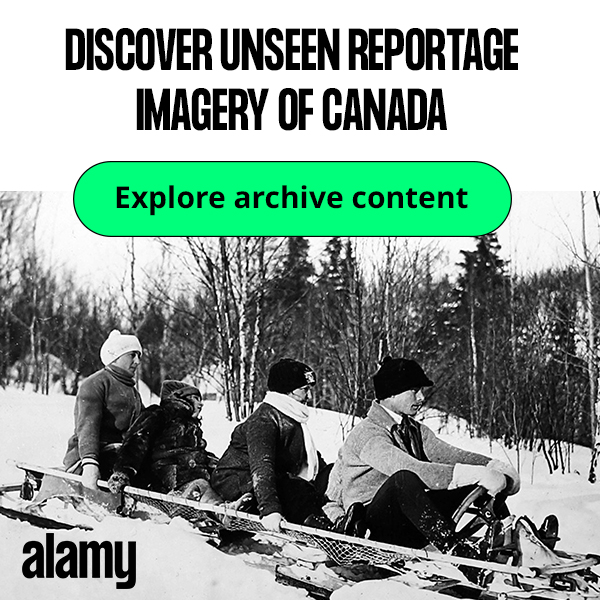Infusing Meaning, Art and Community, exploring the practice of the Native Youth Program
Damara Jacobs-Petersen

2023 Native Youth Program participant in the Haida House. Left to right: Damara Jacobs-Petersen, Squamish Nation; William George, Lake Babine Nation (age 16); Hailee Stogan, Musqueam (age 18); Sienna Mathison, Musqueam (age 14); Anyili Schwab-Ortez, White Earth Anishinaabe and Latina (age 14); Amai Campbell-Kamangirria, Musqueam and Zimbabwean (age 16); Seneca Kozar, Hwlitsum First Nation (age 15). Photo – Maria-Jose Araujo (2023).
In honouring my teachings, it is imperative that I introduce myself properly before we talk business. My name is Damara Jacobs-Petersen and my Ancestral names are Siyamiya and Cha7awtenaat. I am a proud enrolled member of the Skwxú7mesh (Squamish) Nation and I participate and live in my community. I also have Snuneymuxw (Nanaimo) and African American lineage. I was born and raised in the villages of Xwemelch’stn and Esla7han (Capilano and Mission Indian Reserves) located in Vancouver, British Columbia. I grew up surrounded by educators and artists, an aspect of my identity that led me to choose a career in creative fields. I am grateful that I currently make a living working in a museum. A large part of my museum work is Indigenous youth engagement as I am the Director of the Native Youth Program (NYP).
The Program began in 1979 with a vision that continues to be a core of its mission today – to engage Indigenous youth in meaningful work-learn experiences at the Museum of Anthropology (MOA) at the University of British Columbia (UBC). These meaningful experiences must embrace the student’s lived experiences in order to build their personal confidence, cultural knowledge and competency. The Program exposes students to arts and cultural institutions, and offers workplace learning and responsibilities. I am honoured to witness their growth and the genuine excitement the students exude as they emerge as leaders.
The application process gives students a chance to connect personally, in ways that work for them. It includes submitting a letter telling me why they are interested in participating in the program. They are also asked to complete one of the required assignments which involves visiting the museum or writing an essay about an Indigenous issue that is important to them. Neurodivergent applicants may choose to complete this assignment in an alternative format such as a video or artwork (past examples include a poem and photography). The application package is designed to walk them through this process with detailed instructions, examples and suggestions. I also conduct an interview with the applicants, which has been a great way to teach employment skills.
This year the NYP celebrated its 44th cohort which included nine high school students representing thirteen Nations and communities from across Canada, Zimbabwe, and Germany to name a few. Three youth were from xʷməθkʷəy̓əm (Musqueam) whose reserve lands are closest to the UBC Point Grey campus where the museum is located. There is an emphasis on recruiting students from the local host Nations (xʷməθkʷəy̓əm (Musqueam), Sḵwx̱wú7mesh (Squamish), and səlilwətaɬ (Tsleil-Waututh)) but the program is open to all youth that identify as Indigenous and live in the greater Vancouver area.
The Indigenous youth student workers are provided with various opportunities to research their own and other cultures through MOA’s collection and through participation in field trips, projects, and workshops. They also learn about resources available through MOA and the broader UBC community. What is important to note is that a central thread of artistic learning and expression is woven into most of the program activities.
NYP is a full-time commitment, and meets Monday to Friday for two months over the summer and students share their new knowledge with other youth and museum visitors through guided tours and presentations. They are paid for this work, and their energy and capacity forms a substantial benefit to the museum that we hope to return through care and positive experience.
There is a strong emphasis on community-based learning, in addition to artistic practice that is woven into the program. The 2021 and 2022 cohorts focused on intergenerational learning opportunities with small children and worked with the Host Nations summer camps. The NYP provided tours and developed an activity booklet which featured space for drawing. This allowed the NYP participants the opportunity to share their program work with over one hundred Indigenous children ranging in ages from eight to twelve years old.
The 2014 MOA exhibition Claiming Space: Voices of Urban Aboriginal Youth curated by previous program director Pam Brown still holds a special place in the institutional memory of MOA. The exhibition looked at the diverse ways Indigenous youth are asserting their identity and affirming their relationship to both urban spaces and ancestral territories. Unfiltered and unapologetic, over 20 young artists from across Canada, the US and around the world define what it really means to be an urban Indigenous youth. In doing so they challenge centuries of stereotyping and assimilation policies. This exhibit left visitors with the understanding that today’s urban Indigenous youth are not only acutely aware of the ongoing impacts of colonization, but are also creatively engaging with decolonizing movements through new media, film, fashion, photography, painting, performance , creative writing and traditional art forms. The content of this exhibition is just as relevant today as it was a decade ago.

The 2022 cohort of the Native Youth Program at MOA with journalist/musician Nardwaur, after a day learning to podcast at the University of British Columbia’s campus radio station. Photo – Damara Jacobs-Petersen, courtesy of the Museum of Anthropology at UBC.
The 2014 NYP cohort provided daily tours of the Claiming Space exhibition and this practice of tour guiding continues today. It is an essential component of the program, through developing their tour scripts the students find their voice. The ability to stand up and share who you are and where you come from is a powerful and significant accomplishment for the teens.
The youth are also able to gain insight into how to best express their own identity through working with Indigenous artists and knowledge holders. The 2021 and 2022 cohorts participated in two virtual art making workshops for a collaborative project with the Ghost Net Collective that addressed the issues facing coastal communities and our shared responsibility of ocean conservation. The small woven sculpture sting rays the NYP created are featured in a public artwork in Exchange Square at Barangaroo in Sydney Australia. The intricate work by the Ghost Net Collective comes from a group of Indigenous and non-Indigenous artists from Cairns, Townsville and Erub in the Torres Strait. The permanent installation is titled Mermer Waiskeder: Stories of the Moving Tide and it is one of the largest hand-crafted public artworks in Australia. More recently the 2023 NYP cohort utilized the Emily Carr University’s Aboriginal Gathering Place (AGP) to develop and strengthen their identities through artmaking in a supportive, safe environment. The design of the physical space is relevant to and congruent with Indigenous philosophies and values. The youth explored and applied their own cultural context to the design of their projects. The tangible outcomes included a diverse range of objects created from traditional and contemporary materials including: Drum Making, Rattle Making, Film Making, Beadwork, Music and Sound Production, Painting, Photography, and Printmaking. The NYP were able to focuses on developing, promoting and perpetuating cultural material practice and technical skills.
Meanwhile, past cohorts also had the opportunity to explore their identity and culture without leaving the UBC campus. In 2021, the NYP created unique spoken work pieces focused on their personal origin stories which aired on campus radio station CiTR along with original music created by NYP Almuni Mackenzie Fong. The piece titled Where We Begin: A Collection of Origin Stories won best Audio Documentary at the National Campus and Community Radio Association Awards.
This project enabled students to build valuable skills: researching and assessing sources, script writing, podcasting, film making, social media management, visual art making, and public speaking.

The 2023 cohort of Native Youth Program on a visit to Musqueam with Musqueam Elder Larry Grant. Photo – Damara Jacobs-Petersen, courtesy of the Museum of Anthropology at UBC.
Artistic practice allows the program participants space to explore their personal narratives and cultural lifeways. Through it, they discover, as we all can, what make them unique and but also what connects us as a community. My personal goal as program director is to transform the spaces I work into interactive learning environments where creative knowledge production and transformative learning can be accomplished, empowering youth in my care to see themselves for who they are, who they are connected to, what they can offer and what they deserve to feel in return.
Damara Jacobs-Petersen is responsible for the collaborative design, implementation, and evaluation of educational and public programming that bridges Indigenous communities and the diverse audiences the Museum of Anthropology (MOA) serves. Damara is the Curator of Indigenous Engagement and also the Director of the Native Youth Program, MOA’s longest running work-learn opportunity for Indigenous youth.
